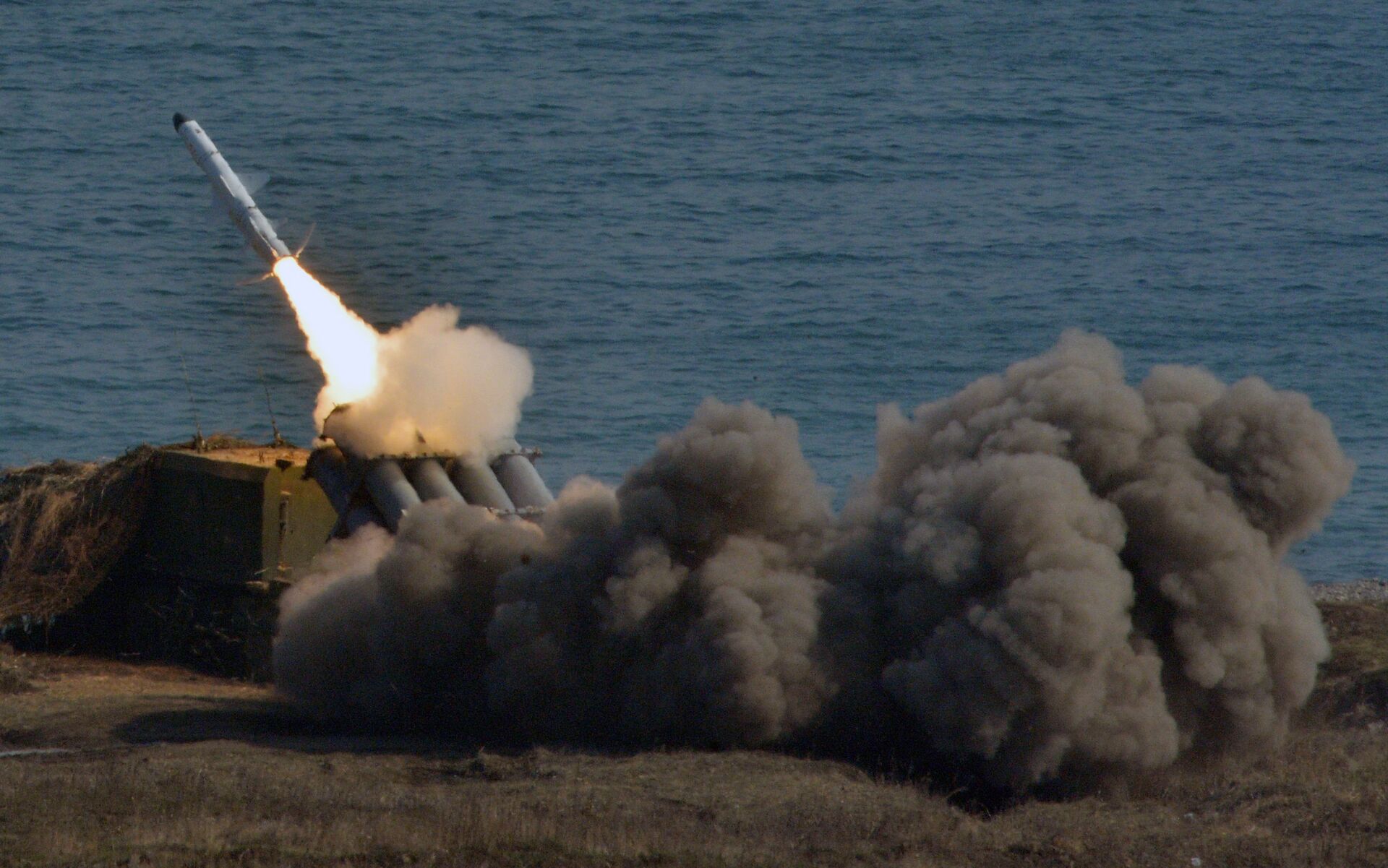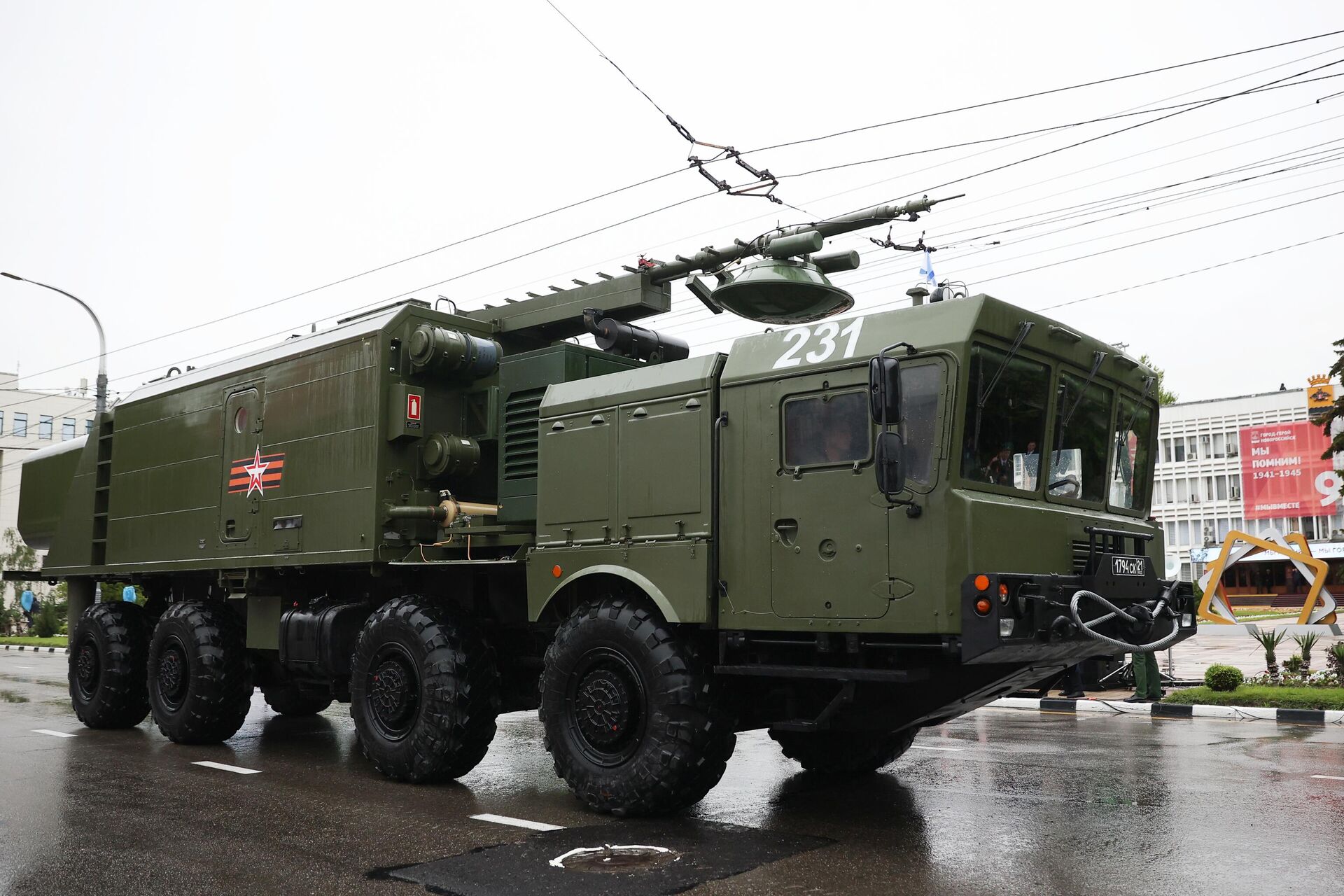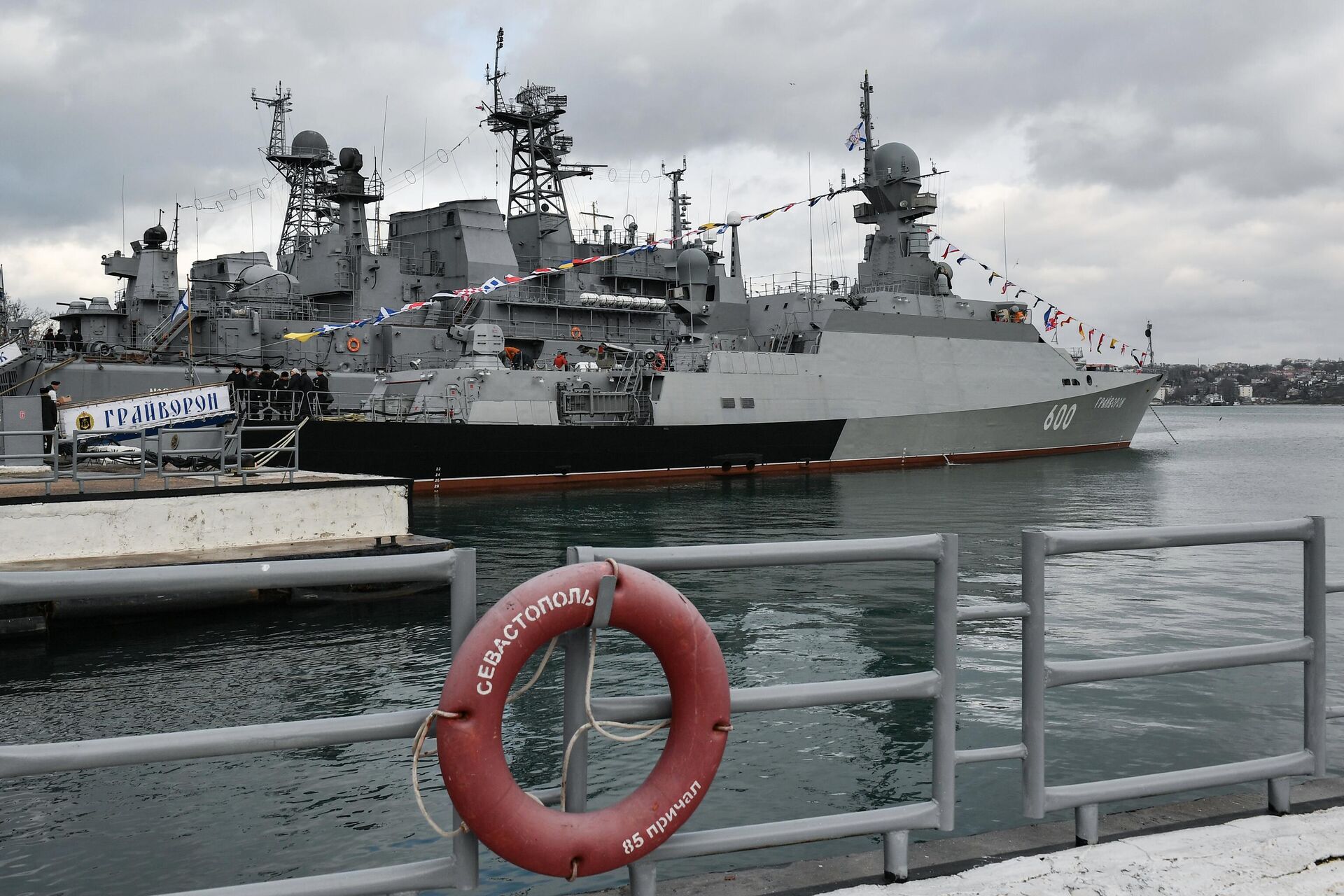How Russia's Layered Air, Ground and Sea-Based Defenses Shield Its Black Sea Shores
16:42 GMT 25.12.2023 (Updated: 16:44 GMT 25.12.2023)

© Photo : Trebovaniye-M Combat Management System brochure
Subscribe
The Black Sea has been a focal point of the NATO-Russia proxy war in Ukraine from the opening days of the special military operation, with the body of water witnessing naval blockades, amphibious landings, drone warfare and even close calls between Russian and US forces. What resources does Russia have at its disposal to secure this vital theater?
The Russian Defense Ministry released unique footage Monday showing the operations of Beriev Be-12 turboprop amphibious anti-submarine aircraft and Kamov Ka-29 combat helicopters in the Black Sea.
The video shows aircraft practicing machinegun fire and bombing runs against small, high-speed naval targets – training for which has become vital over the past twenty two months amid the ever-present threat of asymmetric Ukrainian hit-and-run attacks by small gunboats and advanced, NATO-gifted naval drones against Russian capital ships, naval bases, and coastal defenses in Crimea, Kherson, and Novorossiysk.
The operations of Russia’s Black Sea Fleet, its Naval Aviation component, Coastal and Air Defense Troops have proved critically important in protecting Crimea’s 2,500 km-long coastline from enemy incursions. Together with Army formations in Kherson and Donetsk, these the former have proven vital in preventing Kiev from realizing its counteroffensive’s objectives, severing the land bridge between Crimea and mainland Russia, and occupying the peninsula.
“If you look at NATO’s textbooks and at the maths which we did, four months should have been enough time for us to have reached Crimea, to have fought in Crimea, to return from Crimea and to have gone back in and out again,” General Valery Zaluzhny bitterly complained to British media in early November.
Instead, the Ukrainian top commander admitted, the conflict had hit a “stalemate,” and there would be “no deep and beautiful breakthrough” for Ukraine.
Besides Ukraine’s military, Russian naval and air forces have also had to defend the Black Sea’s shores and airspace from the US and its NATO allies, with such efforts demonstrated most vividly in the March 2023 incident where a Russian Sukhoi Su-27 interceptor jet forced an intruding US Air Force MQ-9 Reaper drone probing Russian defenses down over the body of water.
The incident prompted the US and NATO to temporarily halt their drone surveillance missions over the Black Sea altogether. Russian jets were scrambled a second time in August after picking up another MQ-9 and a Turkish-made TB2 Bayraktar attempting to conduct aerial reconnaissance near Crimea.
Onion Layer Defenses
As might be expected for such an important strategic theater, Russia’s Black Sea defenses are multifaceted and multilayered.
Aerial Defense
Together with the aforementioned Be-12 aircraft and Ka-29 helicopters of the Black Sea Fleet’s Naval Aviation arm, Crimea and Krasnodar Krai-based aerial assets tasked strictly with the defense of the body of water from enemy aerial and maritime threats include:
Sukhoi Su-30 fighter jets and Sukhoi Su-24 tactical bomber/interceptor aircraft
Mil Mi-8 and Mil Mi-14 multipurpose helicopters
Antonov An-12 and An-26 transport aircraft
Orlan, Forpost, and Granat-4 drones (launched from the coast or carried by Black Sea Fleet warships)
These forces are complemented by Aerospace Forces aircraft from the Southern Military District stationed at airbases in Rostov, Stavropol and Krasnodar – as seen in the March Su-27-MQ-9 incident, to handle aerial threats. Aerospace Forces jets have occasionally been deployed to the Black Sea to handle strategic missions. In mid-October, for example, President Putin announced that Aerospace Forces MiG-31K jets armed with Kinzhal hypersonic missiles would engage in permanent patrols over neutral waters in the Black Sea going forward in light of the deteriorating security situation in the Mediterranean Sea.

Black Sea Fleet Naval Aviation Su-30 fighter jet escorts a US Navy Boeing P-8 Poseidon over the Black Sea in 2021. File photo.
© Photo : Russian Defense Ministry
Coastal Defenses
No less important when it comes to protecting the Black Sea coast from enemy intrusion are the Black Sea Fleet’s Coastal Troops, consisting of the powerful 22nd Army Corps. Along with anti-ship and anti-air missile systems designed to take on enemy forces at long ranges, Coastal Troops formations include motorized infantry, tanks, anti-tank missiles and artillery, heavy engineering and transport vehicles, with their mission being to fight for the coast directly if worst comes to worst and enemy forces manage make a successful landing.
The Coastal Troops’ long-range anti-air and anti-ship weaponry are tasked with preventing such an eventuality, and to pick off enemy forces before they can get anywhere near the shore. Their armament includes:
The Bal coastal defense system, equipped with Kh-35 turbojet subsonic cruise anti-ship missiles
The Bastion coastal defense system, firing P-800 Oniks supersonic anti-ship missiles
The Bal’s 145 kg warheads have a range up to 300 km, while the Bastion’s ramjet-powered Oniks are fitted with a 300 kg warhead, and have an operational range up to 800 km – enough to hit targets literally any point in the Black Sea.

Bal coastal missile system firing its missiles. File photo.
© Sputnik / Vitaliy Ankov
/ Iskander tactical missile systems with a 500 km range were moved into Crimea in 2014, and like the Bastion for naval targets, have range characteristics that essentially give them control over the Black Sea against enemy coastal defenses and other stationary objects. Other key equipment includes the older Rubezh coastal missile system, fitted with the large P-15M missile’s 513 kg warhead, and which has a firing range of between 8 and 80 km.
The Coastal Troops also have traditional artillery, including Grad, Tornado-G, Uragan and Smerch multiple launch rocket systems, and self-propelled equipment including the Gvozdika, Akatsiya, Msta-S and Nona-S. While they are designed for operations against ground-based targets, they can also be used against sea-based targets in a pinch.
For air defense, the Black Sea Fleet’s Coastal Troops have S-300 and S-400 long-range missile defenses, Tor-M2 all-weather medium-range missile systems, and Pantsir and Shilka anti-air artillery for closer encounters.
In addition to the independent radar capabilities of some of the above-mentioned weapons, the Coastal Troops’ eyes and ears include the Monolit-B, a road mobile coastal radio reconnaissance complex with long-range, over-the-horizon detection and tracking capabilities for both surface and air targets. The Monolit-B looks out for approaching enemy forces using both active and passive radar channels, and transfers information on whatever it picks up to friendly anti-air and anti-ship systems nearby. The system’s active radar can detect surface targets at ranges between 35 and 250 km, while its passive radar can lock on to targets up to 450 km away. It can track between 30 and 50 targets simultaneously.

Monolit-B rumbles down the streets of Novorossiysk at the Victory Day Parade, May 9, 2023.
© Sputnik / Vitaly Timkiv
/ Naval Assets
Last but certainly not least in the Russian military’s pantheon of coastal defense tools are the Black Sea Fleet’s ships themselves. Their capabilities are almost too colossal to condense, but briefly, include Burevestnik and Steregushchy-class patrol ships, frigates and corvettes, the pocket-sized but powerful Buyan missile ships armed with Kalibr and Oniks missiles and Orlan-10 drones, Albatross anti-submarine warfare corvettes, Akvamarin and Alexandrit-class minesweepers (six in total), Meridian and Yuri Ivanov-class and Project 861M intelligence-gathering ships, and support vessels ranging from tugs to tankers. Plus there are the micro Grachonok, Raptor and Flamingo machine-gun, anti-tank missile and Igla anti-air missile-armed anti-saboteur boats.

Ceremony inaugurating the Buyan-M class small missile ship Grayvoron (foreground) into service with the Black Sea Fleet. January 2021.
© Sputnik / Konstantin Mihalchevskiy
/ That’s not counting the larger Admiral Grigorovich-class frigates (the Black Sea Fleet has three of those, with the Admiral Makarov taking up the mantel of the fleet’s flagship after the loss of the Slava-class Moskva missile cruise last year). These large warships are equipped with Kaliber, Oniks or Zircon cruise missiles and the Shtil-1 – the shipborne equivalent of the Buk missile system. Varshavyanka attack subs (seven in the Black Sea attacked to the 4th Independent Submarine Brigade) silently prowl the sea, sometimes attaching themselves to the potential adversary’s task forces and strike groups and preparing to attack at a moment’s notice if the order is given.
Because the Black Sea is essentially landlocked, not counting its connection to the Mediterranean via the Bosporus, the Black Sea Fleet is not equipped with any nuclear-powered ballistic or cruise missile submarines. However, with the amount of firepower it already has at its disposal aboard warships, subs, coastal defense and air assets, it doesn’t exactly need them.




